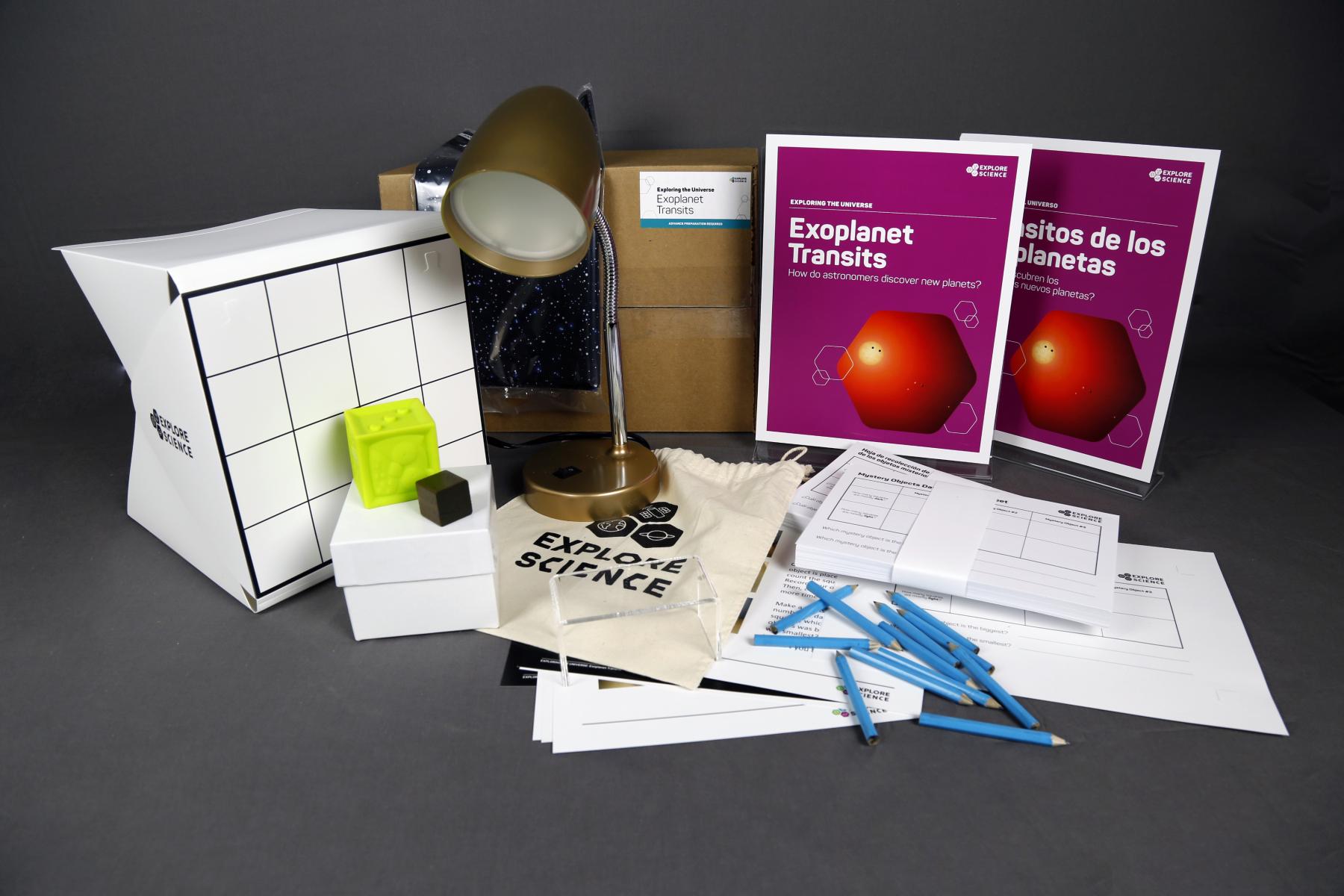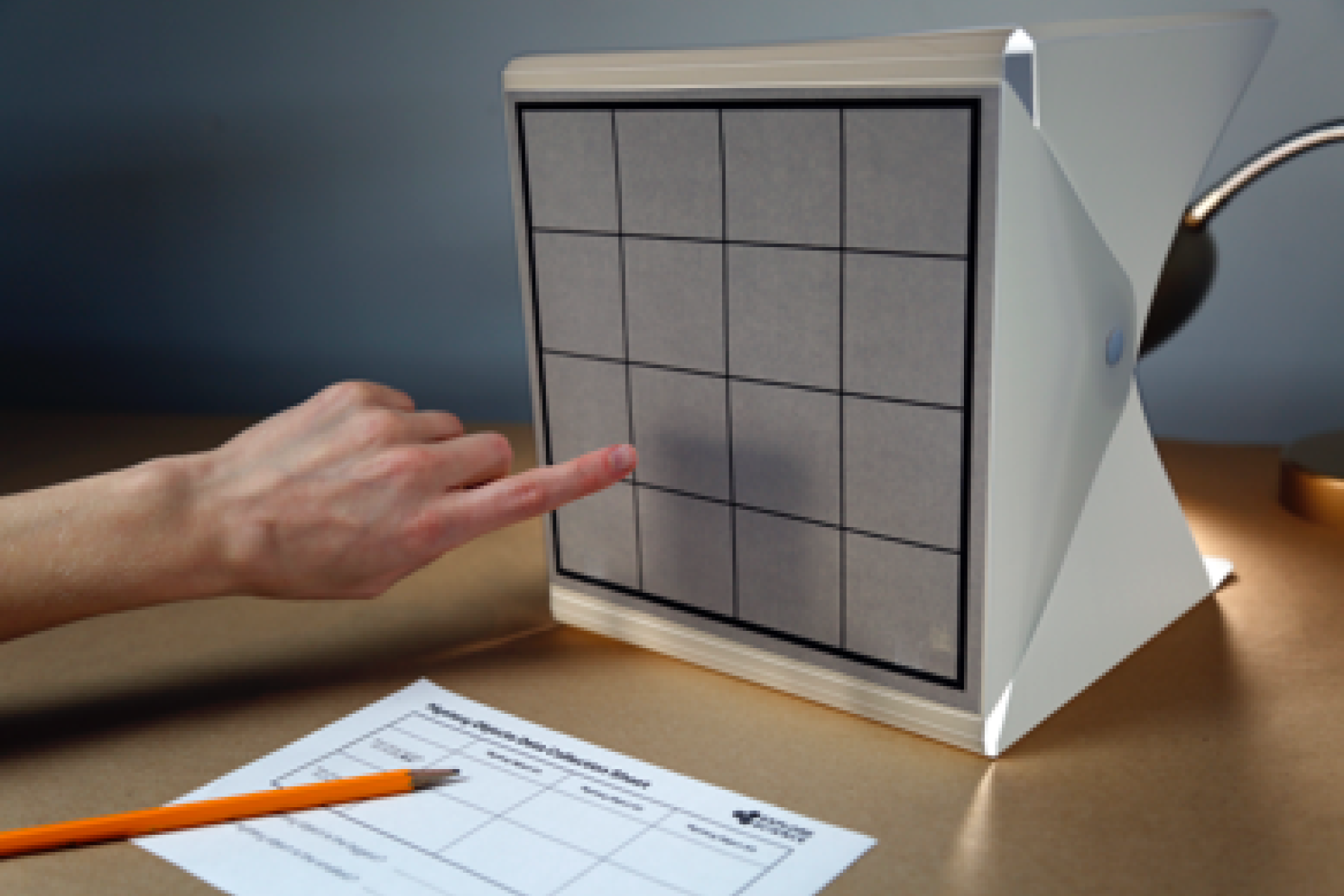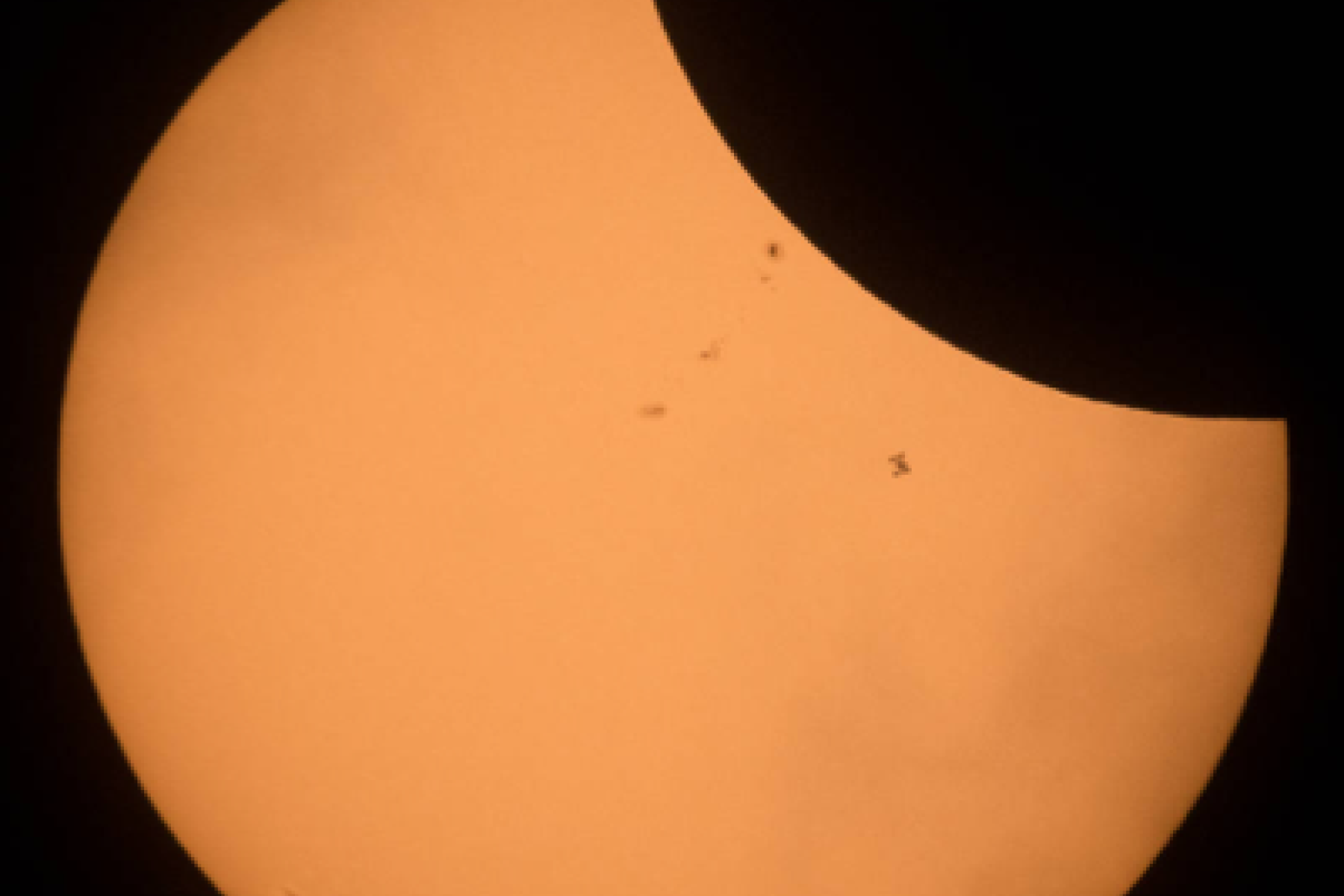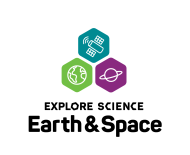DESCRIPTION
In "Exploring the Universe: Exoplanet Transits," participants simulate one of the methods scientists use to discover planets orbiting distant stars. Even when a planet is too far away to observe directly, scientists can infer its presence by watching for slight, regular dips in a star's brightness—when the planet orbits between its star and Earth, some of the star's light gets blocked from view. In this activity, participants perform a similar experiment, seeing what they can learn about a hidden object by studying its shadow.
DESCRIPTION
In "Exploring the Universe: Exoplanet Transits," participants simulate one of the methods scientists use to discover planets orbiting distant stars. Even when a planet is too far away to observe directly, scientists can infer its presence by watching for slight, regular dips in a star's brightness—when the planet orbits between its star and Earth, some of the star's light gets blocked from view. In this activity, participants perform a similar experiment, seeing what they can learn about a hidden object by studying its shadow.
TRAINING VIDEOS
OBJECTIVES
LEARNING GOALS
• Scientists are searching the universe for planets orbiting distant stars.
• When a planet, or other object, moves between its star and Earth, some light from that star gets blocked from view.
• The transit method is one of the ways NASA scientists search for distant planets.
DOWNLOAD FILES
- Exoplanet Transits activity guide (DOCX)
- Exoplanet Transits activity guide (PDF)
- Exoplanet Transits facilitator guide (PDF)
- Exoplanet Transits info sheet "Light Curves from TRAPPIST-1" (PDF)
- Exoplanet Transits info sheet "Determining the Atmospheres of the TRAPPIST-1 Planets" (PDF)
- Exoplanet Transits table sign (PDF)
- Exoplanet Transits worksheet (PDF)
- Exoplanet Transit Printable Grid (PDF)
- Exoplanet Transits activity guide (Spanish) (PDF)
- Exoplanet Transits activity guide (Spanish) (DOCX)
- Exoplanet Transits info sheet "Light Curves from TRAPPIST-1" (Spanish) (PDF)
- Exoplanet Transits info sheet "Determining the Atmospheres of the TRAPPIST-1 Planets" (Spanish) (PDF)
- Exoplanet Transits table sign (Spanish) (PDF)
- Exoplanet Transits worksheet (Spanish) (PDF)
Credits
The Science Museum of Minnesota
This material is based upon work supported by NASA under cooperative agreement award number NNX16AC67A. Any opinions, findings, and conclusions or recommendations expressed in this material are those of the author(s) and do not necessarily reflect the view of the National Aeronautics and Space Administration (NASA).
Creative Commons Attribution Non-Commercial Share Alike 3.0 United States (CC BY-NC-SA 3.0 US).
View more details

NISE Network products are developed through an iterative collaborative process that includes scientific review, peer review, and visitor evaluation in accordance with an inclusive audiences approach. Products are designed to be easily edited and adapted for different audiences under a Creative Commons Attribution Non-Commercial Share Alike license. To learn more, visit our Development Process page.




